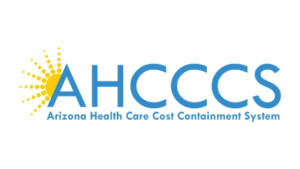Roughly 30 million American workers have lost their jobs or have been furloughed, and may have lost their employer-sponsored health coverage, as the result of the COVID-19 pandemic. Many people may now be searching for individual coverage to meet their needs and may be curious about what they are eligible for. If you are among these millions of Americans affected and are now without healthcare coverage due to the loss of their job and health insurance during this pandemic, you may still be eligible to obtain coverage.
Your health care needs do not stop, so it’s important to maintain coverage if possible. When the time comes to look for new coverage, it’s good to know you can turn to a company you trust to find the individual plan options that may be right for you in these unprecedented circumstances. With one phone call to Group Plans Inc, you can connect with a local, licensed insurance agent and take the first step toward finding quality, budget-friendly coverage with Individual coverage options to fit your needs. With individual coverage options, you may be able to choose from the Affordable Care Act (ACA) Exchange plans or even Short Term Medical Plans, including renewable plans (up to 36 months). Medicare plans for those over the age of 65 also are available. And, depending on your income level, you and/or your children may qualify for coverage through a state-administered Medicaid program, such as AHCCCS.
Marketplace ACA Special Enrollment and other FAQs
Many major medical Health Insurance carriers are offering a Special Enrollment Period to those who have lost their job and ultimately their employer-sponsored health insurance, allowing you to choose and sign up for a plan that is comparable to your previous plan or that suits your individual needs as you see fit. You may also be eligible for Special Enrollment if you missed your enrollment period due to having COVID-19 or caring for someone who had COVID-19.
If I lost my job or experienced a reduction in hours due to COVID-19
- If you lost your job-based health plan: You may qualify for a Special Enrollment Period if you lost health coverage through your employer or the employer of a family member in the past 60 days OR you expect to lose coverage in the next 60 days, including if you lose health coverage through a parent or guardian because you’re no longer a dependent. Note: Losing coverage you have as a dependent doesn’t qualify you for a Special Enrollment Period if you voluntarily drop the coverage. You also don’t qualify if you or your family member loses coverage because you don’t pay your premium.
- If your employer reduced the hours you work and you’re enrolled in a Marketplace plan: Update your application immediately within 30 days to report any household income changes. You may qualify for more savings than you’re getting now. Learn how to report changes.
- If you were furloughed: In some situations depending on the status of your health coverage from your employer, you may qualify for a Special Enrollment Period. You may be eligible for a premium tax credit to help pay for Marketplace coverage too. Create an account or log in to start your Marketplace application to find out if you qualify.
- If you have COBRA continuation coverage:
- If you’re entitled to COBRA continuation coverage after you lost your job-based coverage, you may still qualify for a Special Enrollment Period due to loss of coverage. You have 60 days after your loss of pre-COBRA job-based coverage to enroll in Marketplace coverage. You may also qualify for premium tax credits if you end your COBRA continuation coverage.
- If you’re enrolled in COBRA continuation coverage, you may qualify for a Special Enrollment Period if your COBRA continuation coverage costs change because your former employer stopped contributing, so you have to pay the full cost. Learn more about COBRA continuation coverage and the Marketplace.
- If you lost your job but didn’t also lose health coverage, because your former job didn’t offer coverage: You generally won’t qualify for a Special Enrollment Period. By itself, a job loss (or a change in income) doesn’t make you eligible for a Special Enrollment Period to enroll in Marketplace coverage. See if you qualify for a Special Enrollment Period another way.
Coverage start dates with a Special Enrollment Period due to loss in coverage
- If you’ve already lost coverage, your Marketplace coverage can start the first of the month after you apply and enroll.
- If you know you’ll lose coverage within the next 60 days, you can submit an application on HealthCare.gov before you actually lose your coverage to help make sure there’s no gap in coverage. For example, if you know you’ll lose coverage on April 30, and apply and enroll in a Marketplace plan April 10, your new coverage will start May 1.
If I can’t pay my premiums because of hardship due to COVID-19
- Check with your insurance company about extending your premium payment deadline or ask if they will delay terminating your coverage if you can’t pay your premiums.
- Most of the time, if you aren’t receiving financial assistance with your premiums, you have a grace period determined by state law (often one month). If you’re getting financial assistance, you have a three-month grace period during which your coverage can’t be terminated for not paying your premiums.
- If your household income has changed, update your application immediately. You could qualify for more savings than you’re getting now.
If I’m enrolled in a Marketplace plan and my income has changed
- If you’re enrolled in a Marketplace plan and your household income has changed, update your application immediately. If your income goes down or you gain a household member:
- You could qualify for more savings than you’re getting now. This could lower what you pay in monthly premiums.
- You could qualify for free or low-cost coverage through Medicaid or the Children’s Health Insurance Program (CHIP).
If I previously qualified for a Special Enrollment Period but missed the deadline because I was impacted by the COVID-19 national emergency
If you qualified for a Special Enrollment Period but missed the deadline due to COVID-19 (like if you were sick with COVID-19 or were caring for someone who was sick with COVID-19), you may be eligible for another Special Enrollment Period. Visit FEMA.gov for information about emergencies in your state.
To see if you’re eligible for this Special Enrollment Period, contact the Marketplace Call Center at 1-800-318-2596 (TTY: 1-855-889-4325).
If my child is now living with me after their college sent them home early
- Your child can generally qualify for a Special Enrollment Period due to change in residence if they’re:
- Still enrolled in a student health plan that counts as qualifying health coverage, but the coverage and benefits don’t extend to your area.
- Had qualifying health coverage or lived in a foreign country or a U.S. territory for at least one of the 60 days before the date of their move. Note: This requirement doesn’t apply to members of a federally recognized tribe or Shareholders of Alaska Native Corporations.
- If your child is under 26 and you’re already enrolled in Marketplace coverage, you may be able to add your child to your plan.
- If you have Marketplace coverage with savings and don’t plan to claim your child as a tax dependent on your federal tax return, your child should set up their own Marketplace account and submit a separate application.
- If you plan to claim your child as a tax dependent on your federal tax return, and you currently have Marketplace savings with your coverage, you can update your Marketplace application and add your child.
- If you have Marketplace coverage without requesting savings, you can put everyone on one application.
If I get a direct deposit or check from the IRS that is called an economic impact payment
The Coronavirus Aid, Relief, and Economic Security (CARES) Act calls for the IRS to make economic impact payments of up to $1,200 per taxpayer and $500 for each qualifying child. If you get one of these payments, you don’t need to include it in the income you report on your HealthCare.gov application. These payments don’t impact your eligibility for financial assistance for health care coverage through the Marketplace or your eligibility for Medicaid or the Children’s Health Insurance Program (CHIP). For more information, visit IRS Coronavirus Tax Relief information.

Short Term Medical Plans
Short Term Medical Plans or STM plans are designed to provide temporary health coverage during unexpected gaps in coverage, with coverage starting as early as the next day. These plans do not meet the 10 minimum essential coverage requirements under the Affordable Care Act (ACA) and may result in a tax penalty. Most STM plans do not cover pre-existing conditions.
Who should consider a Short Term Medical Plan, people who are:
– in-between jobs or waiting for benefits to start a new job
– without health insurance because they missed the ACA open enrollment period and are not eligible for special enrollment (Though job and coverage loss due to the pandemic may allow you to be eligible for a SEP, or Special Enrollment Period)
– college student looking for a couple of months of coverage
Follow this link to see some more information we have provided regarding Short Term Medical health plans

Medicaid/AHCCCS
The applicant may qualify for this program if the applicant:
- Is an Arizona resident
- Age 19 to 64
- Does not qualify for Medicare
- Is not pregnant
- Is a United States citizen or a qualified immigrant
- Has a Social Security number or applies for one
- To apply for a Social Security number visit the U.S. Social Security Administration
- Make a copy of the form submitted as confirmation of applying for a Social Security Number
- Applies for the potential income that may be available, such as unemployment, pensions, and Social Security
- When the individual is the primary caretaker of a child, the child must have insurance coverage
- Is under the income limit
- Is not eligible for any other group
Other Kinds of Coverage Available
Dental PPO (DPPO) – Preferred Provider Organization
Dental PPO insurance plans are popular with families who want a large network of providers to choose from. PPO providers typically offer a lower rate for service than a non-contracted provider, but you have the freedom to utilize either type of provider. While PPO plans have flexibility in-network, they may have other types of limitations, such as:
– caps on annual coverage amounts
– waiting periods for major services
Dental HMO (DHMO) – Health Maintenance Organization
Dental HMO plans are popular with families who want a low monthly premium, and their general dentist participates in the network. There is typically a fixed amount (copay) for covered services, with some $0 copay preventive benefits. Most plans do not have waiting periods for major services and do not have annual caps on coverage; however, most plans will also not provide reimbursement if the insured sees a dentist that is out of network.

